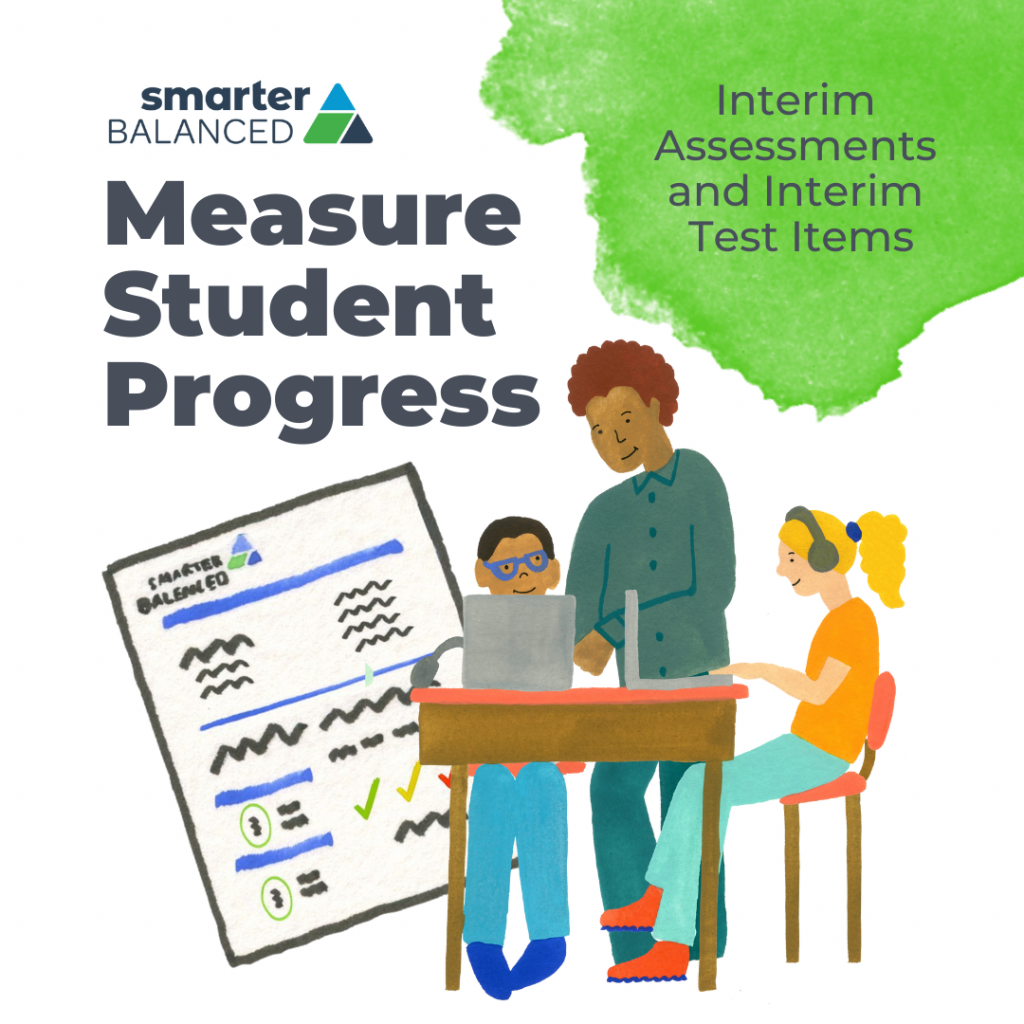Support Student Learning with Smarter Balanced Interims

As the calendar turns to 2022, teachers need resources to support student progress. A great way to check student learning and adjust instruction is to use Smarter Balanced interim assessments and interim test items. In this post, you’ll take a quick journey on the Smarter Balanced interim train so you can keep your students’ learning right on track!
All Aboard: What are the Different Types of Interim Assessments?
Full steam ahead! There are three types of optional interim assessments: Interim Comprehensive Assessment (ICA), Interim Assessment Blocks (IABs), and Focused Interim Assessment Blocks (Focused IABs).
- ICAs are a mid-year progress check designed to measure a broader set of content—mirroring summative assessments by providing a high-level overview of student performance.
- IABs are shorter assessments teachers can use throughout the year and assess between three and eight assessment targets. This helps you check student performance and determine instructional next steps.
- Focused IABs assess no more than three assessment targets—providing teachers a more detailed understanding of student learning.
Before your first stop on the interim train, you may want to take a deeper dive and learn more about interim assessments and their features. Check out the Interim Assessment Overview document.

First Stop: Which Interim Assessment Should I Use?
You can use each interim assessment to measure students’ knowledge and skills in any grade level, including grade levels outside of the students’ enrolled grades! The content on interim assessments is standards-aligned in grades 3-8 and high school. Choose interims that align with your curriculum to support instruction and evaluate progress toward learning goals.
Second Stop: How are Interim Assessments Administered?
Interim assessments are administered online and use the same delivery software as the summative assessments. Test questions include all the accessibility resources available in the summative assessment to help provide accurate results for students.
The ICA can take as much time as the end-of-year summative assessment compared to the IABs and Focused IABs, which can take as little as 30 minutes to administer. Educators have the flexibility to re-administer interim assessments throughout the school year.
Third Stop: More Ways to Use Interims to Support Students
Apart from administering interim assessments, you can also use interim assessment test questions (items) flexibly in the classroom to check student understanding in real-time. This approach can inform instructional next steps and student learning strategies. Our fourth stop will tell you how!
Fourth Stop: The Quick Guide to the Interim Assessment Item Portal
Teachers with access to Smarter Balanced interim assessments can use interim items flexibly in the classroom through the Tools for Teachers quick guide to the Interim Assessment Item Portal (IAIP). Display content-relevant items from the website or print them out for in-class student activities. With the IAIP, you can easily use interim items to support students through the use of the formative assessment process.
Fifth Stop: How can Teachers use Interim Results to Inform Instruction
Interim assessment results provide educators with actionable data about student knowledge and abilities to help teachers target instruction to meet students’ individual learning needs. Results can help you identify instructional next steps such as additional scaffolding or re-teaching.
Bonus! To help you adjust instruction, the Tools for Teachers quick guide to Interim Connections Playlist can help you match student performance on IABs to specific topics and find related instructional resources to use in the classroom the very same day.
You’ve Reached Your Destination
Thank you for boarding! We hope this little journey into Smarter Balanced interim assessments and interim test items has given you a better understanding of resources you can use in your classroom to support teaching and learning. We encourage you to continue this journey through the Tools for Teachers quick guide to Professional Learning Resources, which helps you find specific resources to help you learn more about interim assessments.
